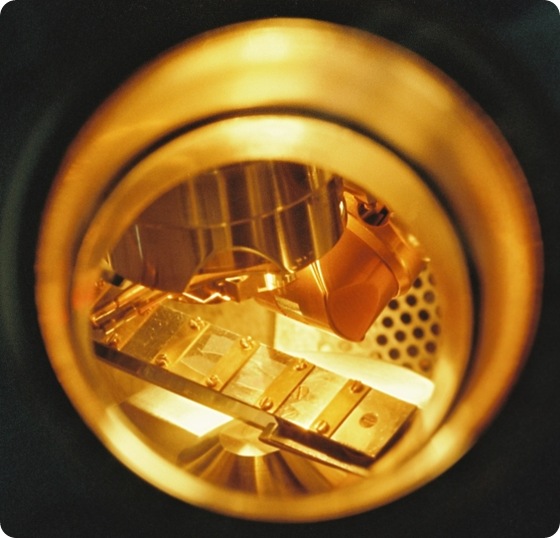Jun 24 2009
Biochips carrying thousands of DNA fragments are widely used for examining genetic material. Experts would also like to have biochips on which proteins are anchored. This requires a gel layer which can now be produced industrially.
Several thousand test fields are tightly packed together on the tiny surface of a biochip. They permit the rapid analysis of substances, e.g. for diagnosing allergens in the blood. These biochips are already in widespread use for DNA testing. When it comes to proteins, such chips are difficult to produce. This is because the proteins have a defined three-dimensional structure by which they can interact specifically with other molecules and control biological processes. If they bind to a surface, such as on a biochip, the structure can be destroyed and the protein cannot perform its function.
Research scientists at the Fraunhofer Institute for Applied Polymer Research IAP in Potsdam-Golm have solved this problem. "We have developed a gel - a network of organic molecules - that we can apply to the surface of the biochip," says Dr. Andreas Holländer, group manager at the IAP. "This gel layer is only about 100 to 500 nano-meters thick and consists mainly of water. We thus make the protein believe that it is in a solution, even though it is chemically connected to the network. It feels as if it is in its natural environment and continues to function even though it is on a biochip." Other research groups are working on similar hydrogels. The key feature of the new production technique is that it can be applied in industry, and the gel layers can be manufactured cheaply on a large scale. Usually there are two ways of producing such networks. In the first, complete polymers are chemically bound to the surface. In the second, the polymer molecules are constructed unit by unit on the surface. "Our technique is a mixture of the two known methods. We use larger molecular building blocks to build up the network on the surface," explains Falko Pippig, who is doing his doctorate on this subject at the IAP.
As the hydrogel layers are very thin, substances added from the outside very quickly reach the protein which is in and on this layer. For example, physicians can put blood or urine on the chip and diagnose illnesses. The research scientists have already developed the process fundamentals. Protein biochips could therefore become everyday items of equipment in medical laboratories - the possible applications far exceed those of DNA chips.